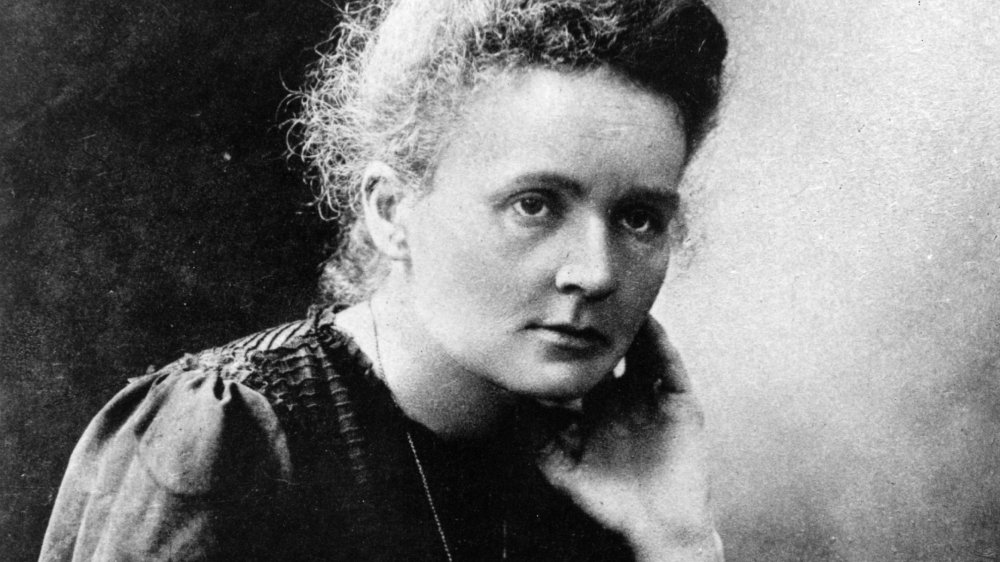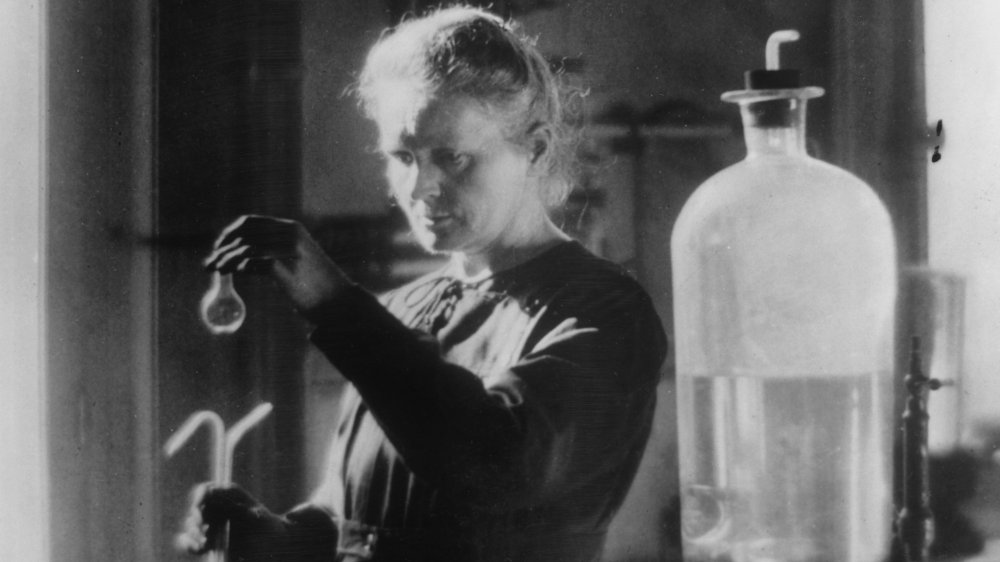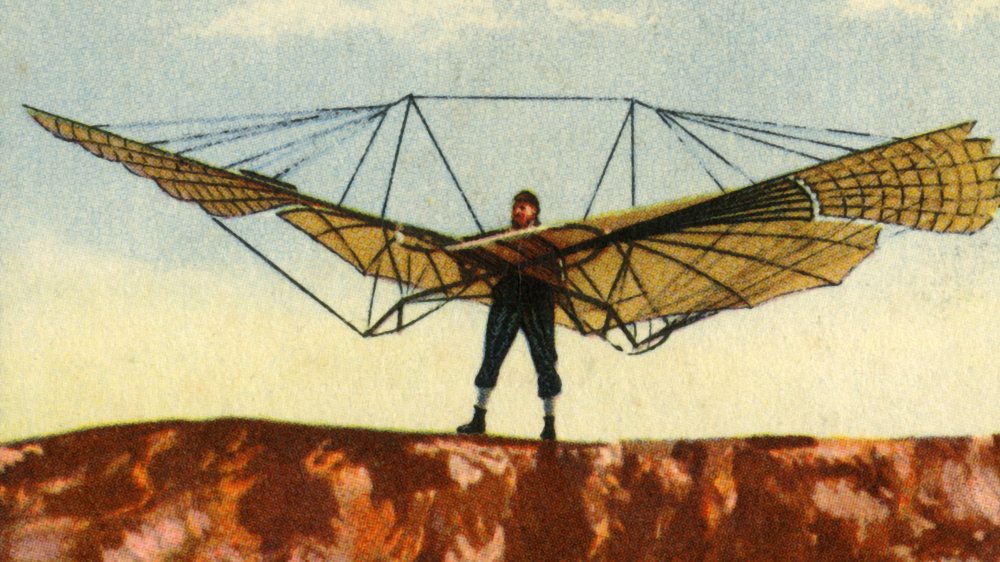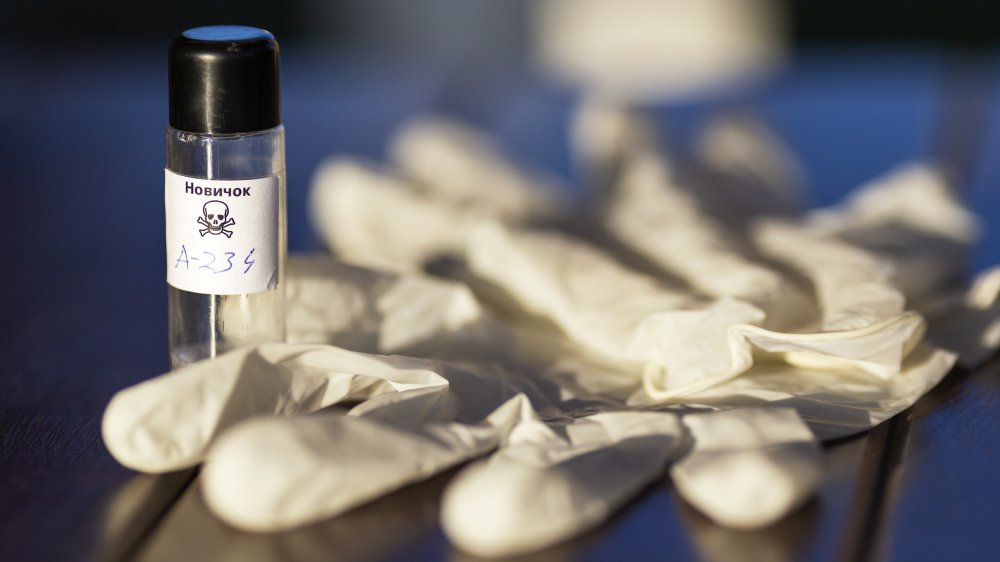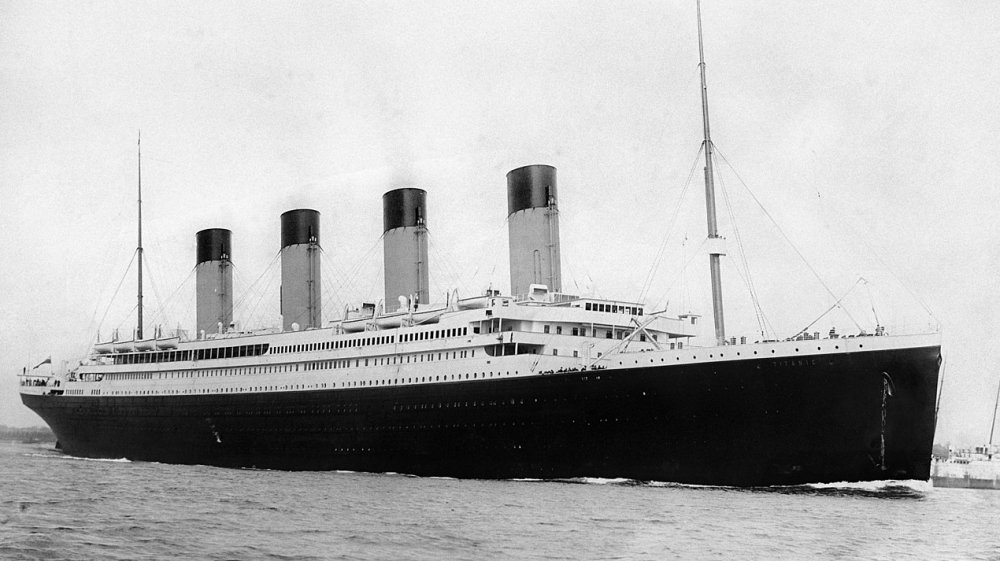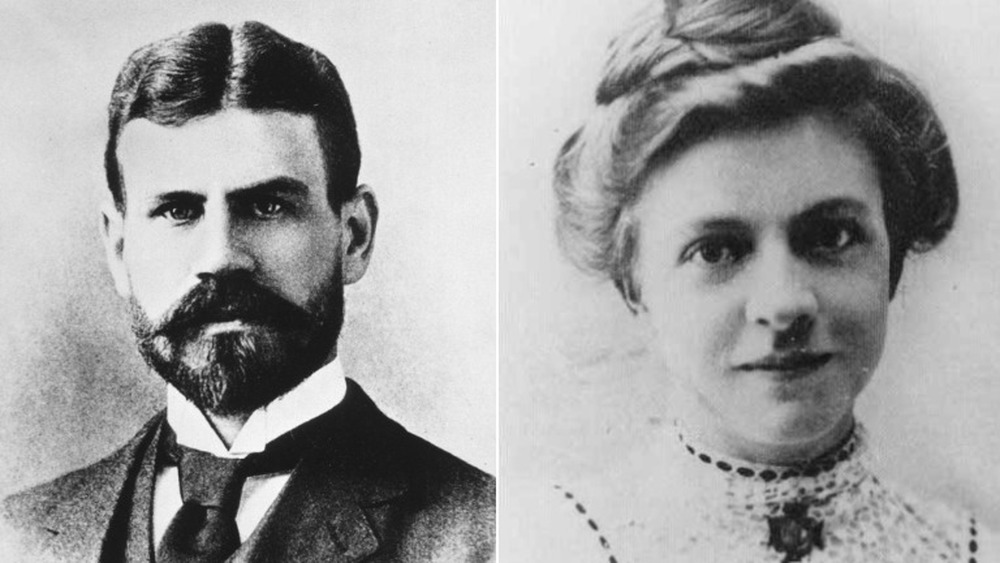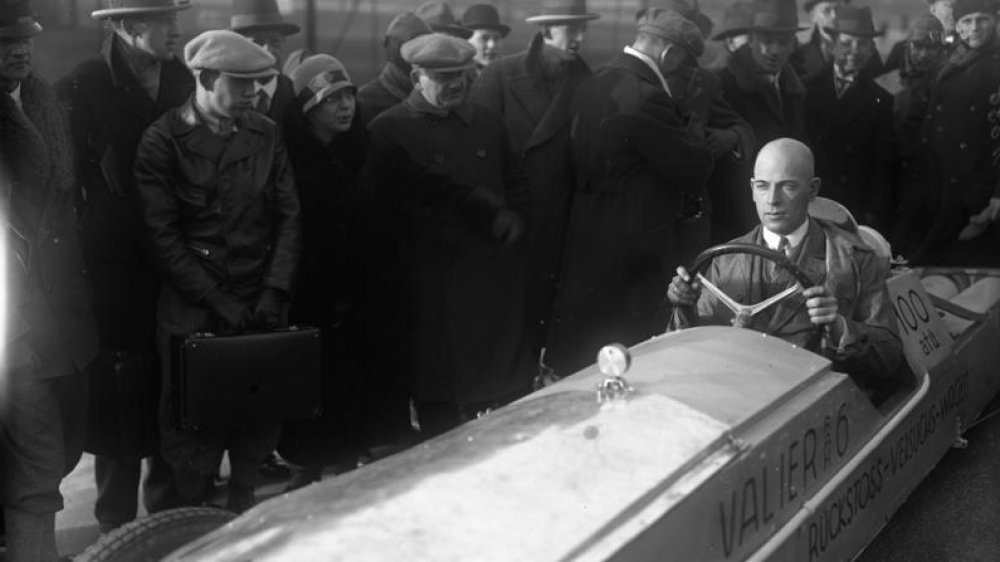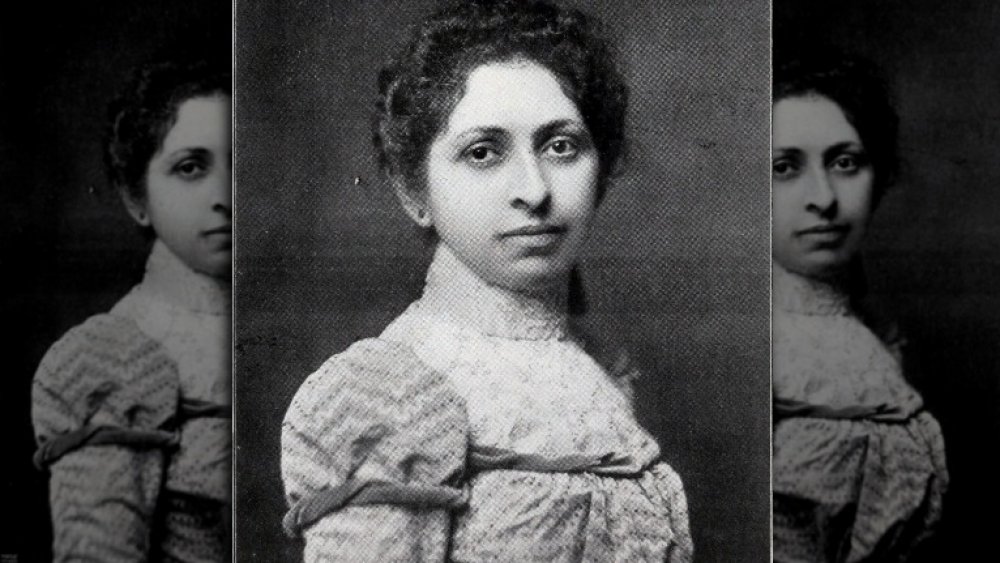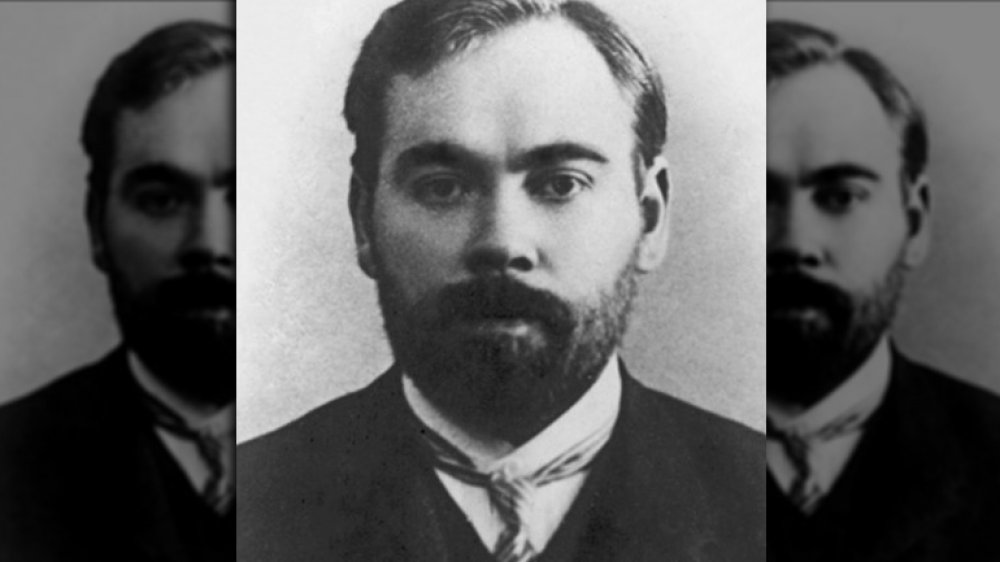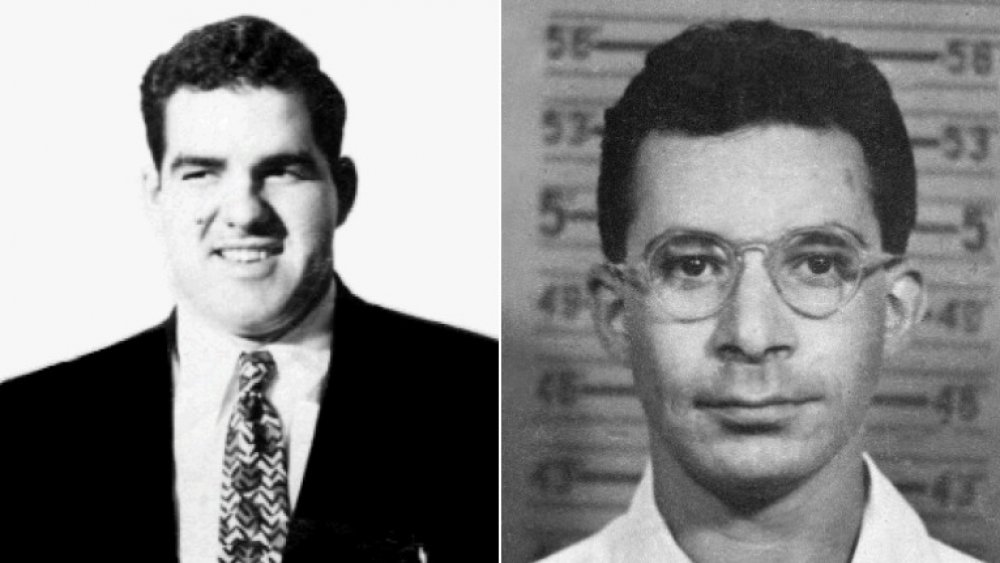Scientists Who Were Killed By Their Own Research
British philosopher James Allen once said, "There can be no progress nor achievement without sacrifice." This maxim is particularly true in the realm of science. Every time modern scientists make a breakthrough, they are building off of the intellectual labor of thousands of other scientists who came before them.
But some scientists sacrifice more than others. In 2009, for example, biology professor Malcolm Casadaban passed away from accidental exposure to the virus that causes the plague, per Science Mag. Countless similar accidents claim the lives of researchers across the globe, even today. Thankfully, safety precautions seem to improve with each passing year, making stories like these increasingly rare.
Even though it's getting safer, science was an inherently risky undertaking for the majority of human history. From working with dangerous chemicals to developing deadly weapons, history's scientists — for better or worse — risked their lives to advance humanity's understanding and control over the world around us. This list will explore some of the individuals who paid the ultimate price for scientific progress.
Marie Curie dies from radiation exposure
Perhaps the best-known scientist to die from her research is the Polish-French physicist and chemist Marie Curie. Curie was a pioneer of the field of radioactivity, and helped discover two new elements: polonium and radium. Per the Encyclopedia Britannica, Curie won a Nobel Prize in Physics in 1903 and in Chemistry in 1911; she was the first woman to win the prestigious award, and the first person to win it twice.
But Madame Curie's research would bring her death. Studying the phenomenon of radioactivity naturally brought Curie into close contact with radioactive materials at a time when the damaging effects of radiation were not well-known. After decades of exposure, Marie Curie passed away from aplastic anemia on July 4, 1934, per Scientific American. Her fatal blood disease was almost certainly radiation-induced. Curie's exposure to radiation was so intense during her lifetime that, according to Science Alert, her possessions will be radioactive for another 1,500 years; she even had to be buried in a lead-lined coffin.
Curie's tragic death due to radiation is a well-known story, emblematic of the sacrifices that progress sometimes entails. Less well known is that Marie Curie's daughter, Irène Joliot-Curie, died the same way. Per the Atomic Heritage Foundation, Joliot-Curie continued her mother's research into radioactive elements, but unfortunately died of radiation-induced leukemia in 1956.
Otto Lilienthal perishes in a glider crash
One of the most deadly scientific endeavors in history has been the pursuit of human flight. Humans have dreamed of soaring through the air since antiquity, plagued by jealousy toward our avian companions.
One of the earliest of victims of this desire was an 11th-century Arabic scholar named Ismail ibn Hammad al-Jawhari. Al-Jawhari was a dictionary-maker, but toward the end of his life, he became fascinated by the successful glider flight of the 9th-century Andalusian inventor Abbas Ibn Firnas. Al-Jawhari attempted to recreate this glider feat, but leapt to his death from the roof of a mosque in either 1002 or 1008.
Eight centuries later, a German engineer named Otto Lilienthal suffered a similar fate. According to the Encyclopedia Britannica, Lilienthal spent the 1870s researching the aerodynamics of wings in air. After publishing his research, he began to design and construct his own gliders. Britannica reports that Lilienthal conducted over 2,000 successful glider flights in the 1890s, which garnered him a great deal of popular attention.
But on August 9, 1896, Lilienthal's streak of successes came to an end. That day's test flights started off well, but on the fourth trial, Lilienthal lost control of his glider and crashed from 50 feet in the air. Lilienthal suffered a broken neck, fell in and out of consciousness, and died in the hospital the next day. Legend has it that Lilienthal's last words were "Sacrifices have to be made!" — but Air & Space Magazine doubts that this is really true.
Andrei Zheleznyakov exposes himself to a deadly nerve agent
During the Cold War, both the Soviet and American governments dedicated top-secret scientific research to biological and chemical weaponry. The United States had the MK-Ultra program run by the CIA, which, according to History, studied the possibility of using drugs like LSD as mind-control tools. The Soviet Union was less interested in psychological warfare, and instead developed "Novichok" — a group of powerful nerve agents with the potential to kill anyone who came into contact with them. Novichok continues to be used today; according to BBC News, it was almost certainly used against Russian opposition leader Alexei Navalny in August 2020, most likely by the Russian government itself.
Novichok's earliest victim was Andrei Zheleznyakov, one of the scientists working to develop it. According to The Guardian, a hood malfunction exposed Zheleznyakov to the chemical during his research in 1987. "Circles appeared before my eyes: red and orange. A ringing in my ears, I caught my breath. And a sense of fear: like something was about to happen," Zheleznyakov said in an interview a few years later.
Novichok would be the end of Zheleznyakov, but it wouldn't be a quick death. According to The Independent, Zheleznyakov was injected with the antidote soon after the 1987 accident. Nevertheless, he would spend the rest of his life afflicted by chronic weakness, depression, epilepsy, and an inability to concentrate. Zheleznyakov died of a brain seizure, alone at his dining room table, in 1993.
Thomas Andrews, naval architect for the Titanic, sinks with his ship
One of the most famous disasters in modern history is the sinking of the Titanic in 1912. You likely know the basics; the Titanic – which, as the BBC reports, was believed to be "unsinkable" – struck an iceberg during its maiden voyage, says National Geographic, and did exactly what it supposedly couldn't: sank. Even worse, the number of lifeboats on the ship was far too low to accommodate what History on the Net reports as the 2,229 people on board.
According to the Encyclopedia Britannica, the Titanic was designed by Thomas Andrews, an Irish shipbuilder and architect. (That's close enough to a "scientist," right?) Andrews had a successful career designing and building ships — that is, until the White Star line hired him to design the Titanic. After it was built, Andrews unfortunately chose to take passage on the Titanic on its first transoceanic trip. When it struck the fateful iceberg, the BBC reports that Andrews refused to debark, choosing instead to sink with the ship he designed. He perished that night, along with 1,500 others, says Business Insider.
It's easy to view the death of Andrews on board the Titanic as some sort of karmic justice for his failure to design a truly unsinkable ship. But modern research might convince you otherwise. According to the Gilroy Dispatch, Andrews asked the White Star line to double the number of lifeboats to 64; they rejected his request. He also asked the company to fund a "double hull," which would have been far more watertight; again, they said no. If it's truly these cost-cutting decisions that are to blame for the sinking of the Titanic, then Andrews was just another unfortunate victim.
Jesse Lazear and Clara Maass die from self-experiments with yellow fever
Unsurprisingly, a particularly dangerous area of science is the study of infectious diseases. Many medical researchers have lost their lives as they research the causes and cures of the world's ailments.
One such scientist was Jesse Lazear. According to PBS, Lazear attained an M.D. from Columbia University in 1892, then began to study infectious diseases at Johns Hopkins University. To further his research, Lazear traveled to Cuba with the U.S. army, where he was able to study "tropical" diseases like malaria and yellow fever up close. Lazear suspected that mosquitoes might be the cause of viral spread, and his theory was confirmed when yellow-fever-ridden mosquitoes transmitted the disease to two volunteers. But Lazear's notes reveal that he had also been performing secret self-tests with infected mosquitoes, and on September 25, 1900, he died of yellow fever.
One year later, an American nurse named Clara Maass died similarly. Per the Encyclopedia Britannica, Maass was also assisting the research of the Yellow Fever Commission in Cuba. With the link between mosquitoes and yellow fever confirmed, the Commission was now studying whether yellow fever would go away under controlled conditions. To advance this research, Maass agreed to be bitten by an infected mosquito. Unfortunately, her yellow fever case became severe, and she died on August 24, 1901.
Of course, Lazear and Maass were far from being the first medical experts to die from self-testing. According to Peru, n 1885, the Peruvian doctor Daniel Alcides Carrión passed away after infecting himself with Oroya Fever and documenting the disease's effects on his body, per an article on PubMed.
Max Valier is killed in a rocket explosion
We mentioned earlier that the pursuit of human flight has been one of the deadliest enterprises in human history. Within flight, an especially dangerous field is that of rocket science. Rockets are notoriously fickle machines, known to explode due to any number of miscalculations. And one of the earliest rocket scientists to give his life for the field was the Austrian engineer Max Valier.
According to the New Mexico Museum of Space History, Valier was born in Austria-Hungary in 1895, and enlisted in that country's aviation unit during World War I. Soon after, Valier became fascinated by rocketry after reading a book by German rocket scientist Hermann Oberth, and decided he would commit himself to making rockets popular. According to Popular Science, Valier began conducting a number of public experiments, strapping powder rockets to cars, sleds, gliders, and more. Valier hoped that these demonstrations would help him raise money to fund his true interest — liquid-fueled rockets — and they did.
Valier began lab experiments with liquid-fueled rockets in January 1930, though unfortunately with little regard for his own safety. On May 17, 1930, the rocket engine Valier was testing exploded. Valier died within minutes from his shrapnel wounds. The Smithsonian calls Valier "the first casualty of liquid-fueled rocket development."
Elizabeth Fleischman, X-ray pioneer, dies from radiation
In small doses, X-rays are perfectly harmless to humans, and can be quite useful as a tool to study the inner workings of our bodies. But with enough exposure, X-rays become deadly, causing our cells to mutate and turn cancerous. Late-19th-century scientists had to discover this fact the hard way.
Elizabeth Fleischman is remembered as a pioneer of X-ray radiography. According to Purdue University, Fleischman was the child of Austrian immigrants, and grew up in San Francisco. After dropping out of high school to support her family, Fleischman became fascinated by X-rays, which were first discovered by German scientist Wilhelm Röntgen in 1895.
The American Journal of Roentgenology reports that Fleischman borrowed some of her father's money to buy an X-ray machine. Then, just one year after Röntgen's discovery, Fleischman established her own X-ray laboratory — the first one in California. Fleischman was fascinated by the medical applications of X-rays; according to the University of Houston, she used them to help identify the injuries of soldiers returning from the Spanish-American war.
While Elizabeth Fleischman made sure to protect her patients from X-ray burns, she took little heed of her own safety. Fleischman worked long hours in the lab, and, like most scientists of the day, she tested her X-ray machines on herself. By January of 1905, Fleischman's right arm had developed cancerous tumors and had to be amputated. Unfortunately, the cancer had already spread, and Fleischman died in August of that year.
Jean-François Pilâtre de Rozier crashes in his balloon
Alongside gliders and rockets, another deadly aviation technology was the hot air balloon, which might feel surprising, given its gentle, drifting appearance. According to the Space website, the first hot air balloon flight took place in France in 1783. The balloon had been designed and tested by two brothers, Joseph-Michel and Jacques-Étienne Mongolfier, but they were not the ones on board. That honor belonged to Jean-François Pilâtre de Rozier, a chemist and physicist who had been assisting the Montgolfiers with their trials.
On November 21, 1783, Pilâtre de Rozier and a French military officer flew the Montgolfiers' balloon from Paris to the suburbs. It was an astonishing feat to all who witnessed it, among whom was Benjamin Franklin. But few could have guessed that ballooning technology would be the death of Pilâtre de Rozier just two years later.
According to Encyclopedia, Pilâtre de Rozier had had minor success as an inventor in the past, but committed himself to the development of ballooning after his work with the Montgolfiers. The Pilâtre de Rozier Organization reports that the Frenchman developed his own type of balloon, which he called "La Rozière," a cross between a hot air balloon and a hydrogen balloon.
On June 15 of 1785, Pilâtre de Rozier attempted to fly his contraption from France to the UK across the English channel. Unfortunately, his design was imperfect, and it caught fire and crash-landed near Boulogne. Both Pilâtre de Rozier and his companion Pierre Ange Romain were killed instantly.
Alexander Bogdanov is killed by a blood transfusion with his student
Odds are, you've dreamt of becoming immortal at one point or another. But have you ever taken any steps to make that dream a reality?
Probably not, but the Russian scientist Alexander Bogdanov did. Bogdanov was a fascinating figure with a variety of interests — an article on PubMed calls him "a physician, economist, philosopher, natural scientist, writer of utopian science fiction, poet, teacher, politician (unsuccessful), lifelong revolutionary," and more. Unfortunately, we don't have enough space to talk about all those aspects of Bogdanov's life, so we'll focus on the man as a physician.
Within medicine, Bogdanov's primary interest was the developing field of blood transfusion. According to historian Bernice Rosenthal, Bogdanov got the support of Joseph Stalin to form an Institute of Blood Transfusion, which he founded in 1926. Per Gizmodo, Bogdanov was fascinated by the idea that blood transfusions could rejuvenate aging people — and, if performed often enough, might even help them achieve immortality.
By 1928, per an article in Transfusion Medicine Reviews, Bogdanov had personally undergone 11 experimental blood exchanges. His 12th would be his last. This time, Bogdanov transfused his blood with that of a student who happened to have malaria. The student survived the procedure, but Bogdanov did not — though probably dying as a result of their incompatible blood types, not the malaria.
John Cassin succumbs to arsenic poisoning from preserved birds
Zoology is a particularly dangerous field of science; from being mauled by a bear to being bit by a venomous snake, there are a thousand ways a zoologist could die. But those who study the animal kingdom from the comfort of their labs are perfectly safe, right? Well, not always.
John Cassin was an American ornithologist — a.k.a. bird researcher — born in 1813. From a young age, Cassin had a keen eye for detail, creating portraits of plants and animals in stunning detail. According to the Cornell Lab of Ornithology, Cassin began working for the Academy of Natural Sciences of Philadelphia in his 20s, and would spend 26 years of his life at the institution. Preserved bird specimens from around the world were shipped to the Academy, where Cassin and the other researchers studied, drew, and described them. Cornell reports that Cassin personally identified 193 new bird species.
But John Cassin's ornithological research was slowly killing him. At the time, animal specimens were preserved using arsenic, an element now understood to be seriously hazardous to human health. Cassin was at least partially aware of the bodily toll of handling these arsenic-laden birds, writing that his research meant "mortgaging myself by perpetual lease to arsenic and liver complaint." That Cassin carried forward nonetheless is a testament to his curiosity and dedication. On January 10, 1869, Cassin died of liver failure brought about by decades of arsenic poisoning.
Harry Daghlian and Louis Slotin perish during the Manhattan project
The Manhattan Project is understood as one of the deadliest scientific undertakings in history. Funded by the American government, it produced the world's first nuclear weapons. But the Project didn't just spell disaster for the victims of nuclear weapons. It also brought about the deaths of several scientists.
Haroutune Daghlian Jr. was an Armenian-American physicist. According to the Atomic Heritage Foundation, Daghlian began working for the Manhattan Project while still a graduate student. Daghlian was a member of the "criticality group" which was tasked with performing dangerous experiments to determine what mass of fissile material (uranium, plutonium, etc.) is needed for an explosion to occur.
On August 21, 1945, a minor mistake would result in Daghlian's death. While setting up an experiment, Daghlian accidentally dropped a brick of tungsten carbide onto a radioactive plutonium core. With a runaway nuclear reaction imminent, Harry Daghlian chose to disassemble the system by hand, exposing himself to a lethal dose of radiation. Daghlian fell into a coma, and was dead in less than a month.
A year later, the Canadian physicist Louis Slotin was killed by the exact same plutonium core. Per the Atomic Heritage Foundation, Slotin's accident occurred on May 21, 1946, when his screwdriver slipped as he was attempting to enclose the core in beryllium-coated half-spheres. Slotin used his body to shield the other scientists in the room from the ensuing reaction, absorbing a great deal of radiation himself; he died just nine days later. According to The New Yorker, the hunk of plutonium that killed both Daghlian and Slotin is now referred to as the "Demon Core."
